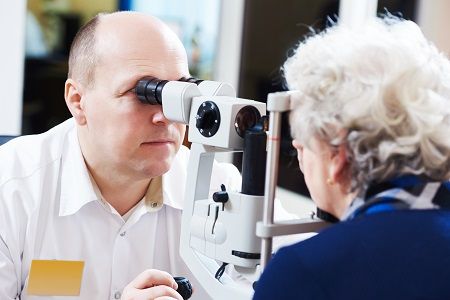Article
Most Data From Major Ophthalmology Conferences Goes Unpublished
Author(s):
A new review has found less than 50% of the information presented at conferences, including AAO and ARVO, never gets published in peer-reviewed journals.

While thousands of hours of work and research go into the studies and abstracts published in annual conferences, a recent review found more than half of the abstracts presented at eye and vision conferences are never fully published.
With these abstracts containing valuable data, the failure to peer-review and publish the majority of this information could mean the loss of applicable insights for ophthalmologists.
“The low proportion of conference presentation abstracts converted to full publication calls for further investigation to determine the factors that could be addressed to mitigate this poor outcome,” study investigators wrote. “There is a potential for harm that may result from low quality information being promulgated at conferences and it is in the interest of patients and professionals to reverse this trend.”
As it stands, many of the most common databases do not include information from all abstracts presented at major conferences like those at the American Academy of Ophthalmology annual meeting. In an effort to quantify the proportion of abstracts that are subsequently published in full articles and what factors are associated with publishing, a team of investigators from Johns Hopkins Bloomberg School of Public Health designed a systematic review to assess the issue. Investigators point out
The current review used data from the MEDLINE, Embase, Cochrane Central Register of Controlled Trials in the Cochrane Library, Web of Science, and reference lists from a search performed on January 11, 2019. A total of 11 unique eye conferences, which took place between 1984-2014, were evaluated for data as part of the systematic review. Of note, conferences in the reports included the Association for Research in Vision and Ophthalmology, the Canadian Ophthalmological Society, and the European Society of Ophthalmology, among others.
From their analysis, investigators obtained 19 reports containing a total of 12,261 abstracts from the 11 eye conferences. All reports included in the review were assessed independently for eligibility, abstracted data, and risk of bias.
Results of the investigators’ analysis indicated 38% (95% CI, 31.7%-44.3%) of abstracts had been published in full within 24 months of presentation at a conference. Results suggested 54.9% (95% CI, 34.6%-73.7%; I2 = 93%) of randomized controlled trials were published compared to 36% (95% CI, 30.1%-43.2%; I2 = 98) of all study designs.
When examining factors associated with full publications, investigators found abstracts presented orally had a 45% (RR, 1.45; 95% CI, 1.20-1.76; I2 = 88%) greater chance of being published compared to posters. Additionally, abstracts related to basic science research were 25% (RR, 1.25, 95% CI, 1.05-1.47; I2=72%) more likely to be published compared to those pertaining to clinical research. Of note, there was no association observed between a study returning “positive results” and full publication (RR, 1.10; 95% CI, 0.91-1.32; I2 = 0%).
Investigators noted a multitude of strengths and limitations of their review. Among strengths listed by investigators were including all reports examining abstracts presented at eye- and vision-related conferences and evaluating risk of bias for each report. Limitations included by investigators were inability to examine underlying reasons for nonpublication, the amount of heterogeneity requires cautious interpretation, and the inability to examine certain factors associated with publication, such as conference location.
This study, “Frequency of Abstracts Presented at Eye and Vision Conferences Being Developed Into Full-Length Publications A Systematic Review and Meta-analysis,” was published in JAMA Ophthalmology.





